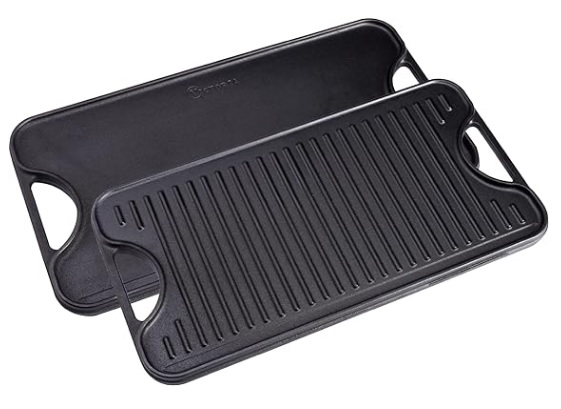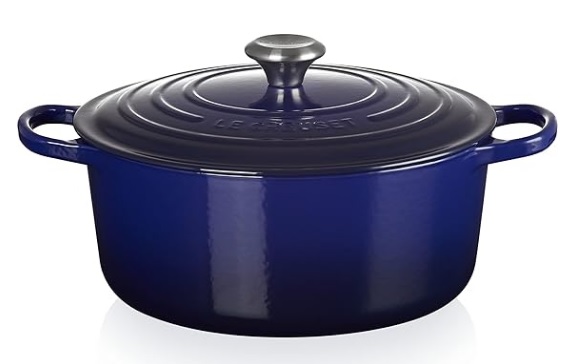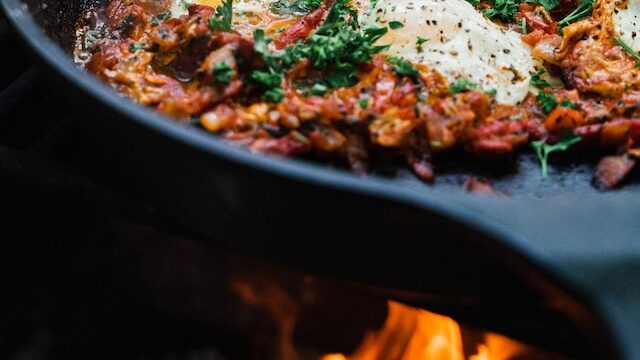Cast Iron Cooking Outdoors: Recommendations and Top Tips
Cast iron pans are the culinary world’s champions in durability, standing out as robust, virtually unbreakable tools. If maintained well, it can serve generations that’s why it’s especially fitting for the great outdoors. When camping, cast iron cooking outdoors is always guaranteed to bring out meals that make the experience even better.
Another standout feature I love about them is their unparalleled ability to ensure consistent heat distribution, guaranteeing that every portion of your meal is cooked to perfection. Additionally, as you continue using cast iron, its seasoning process deepens, enriching your dishes with a distinct and increasingly flavorful taste that’s challenging to mimic elsewhere.
The Best Cast Iron Pans for Outdoor Cooking
Skillet: The Universal Cast Iron Pan
Versatility is important in outdoor cooking, and the skillet is the most versatile of all. Its flat base and sloped edges make it perfect for both frying up crispy bacon and flipping fluffy pancakes. Plus, due to its cast iron composition, it retains heat exceptionally well, ensuring that food is cooked evenly and thoroughly, even in outdoor conditions.
Product Recommendation: Lodge Pre-Seasoned Cast Iron Skillet

The Lodge Pre-Seasoned Cast Iron Skillet is a crowd favorite, boasting impressive ratings and a plethora of positive reviews on Amazon. This skillet stands out for several reasons:
Pre-Seasoned: It comes pre-seasoned, which means it’s ready to use right out of the box. This seasoning also aids in its natural non-stick properties.
Durability: Lodge is a well-known brand in the cast iron community, revered for its high-quality products. This skillet, being no exception, promises longevity.
Handle Design: The skillet features a comfortable handle with a second helper handle on the opposite side, making it easier to lift, especially when full.
Griddle: Perfect for Breakfast
If breakfast is your jam, the griddle should be your cast iron of choice. Its expansive flat surface provides ample room to cook multiple items at once – think a stack of pancakes on one side and sizzling sausages on the other. Griddles are also fantastic for achieving that uniformly golden crust on your breakfast favorites due to the even heat distribution of cast iron. Flipping food and serving is a breeze, which is quite handy when you’re trying to manage multiple dishes in an outdoor setting.
Product Recommendation: Victoria Cast Iron Griddle

On Amazon, the Victoria Cast Iron Griddle is a standout product with glowing reviews and top-tier ratings. Here’s why this griddle makes the cut for outdoor cooking:
Reversible Feature: It boasts a double-sided design – one flat side for pancakes and sandwiches, and a ridged side ideal for grilling meats and veggies.
Pre-Seasoned Advantage: This griddle comes pre-seasoned which ensures that you get that non-stick benefit from the get-go.
Wider Ergonomic Handles: It comes with easy-grip handles which makes transporting or moving it easier especially when it’s piping hot.
Dutch Oven: For Stews and Bakes
The dutch oven, with its deep design, is tailor-made for slow-simmered stews that meld flavors over hours. You can even do baked delicacies in this! Its secure lid ensures moisture retention, so your dishes remain succulent. The even heat distribution of cast iron guarantees consistent cooking.
Product Recommendation: Le Creuset Enameled Cast Iron Signature Round Dutch Oven

Navigating through Amazon’s vast collection, the Le Creuset Enameled Cast-Iron Dutch Oven stands out as a top-tier choice. Here’s the lowdown on its winning features:
Superior Enamel Finish: Beyond its polished look, the Dutch oven’s premium enamel finish means you’re spared the seasoning rigmarole. Additionally, post-feast cleanup is a breeze.
Efficient Heat Distribution: One of Le Creuset’s hallmarks is its design emphasis on ensuring efficient and uniform heat distribution. This means your dishes cook evenly, reducing the chances of hot spots or undercooked sections.
Legacy of Quality: Rooted in a tradition of excellence, Le Creuset’s Dutch oven is not just about today’s meal; it’s built to serve for years.
Care and Maintenance of Cast Iron Pans
Let’s delve into the essentials of maintaining your cast iron pans, ensuring they serve you for years, if not generations.
Seasoning Your Pan
Seasoning is the process that keeps your cast iron non-stick and rust-free. To season, simply coat your pan with a thin layer of cooking oil, wiping away any excess, and then heat it in the oven for about an hour. Doing this periodically, especially when the pan starts to lose its sheen, will maintain its non-stick surface and protect it from wear.
Cleaning Tips
After cooking, it’s vital to clean your cast iron promptly to preserve its condition. Here’s a simple routine:
1. Use warm water and a soft brush or sponge to gently clean the pan. Don’t soap, as it will strip away the seasoning.
2. If you encounter stubborn food bits, a paste made of coarse salt and water works wonders as a gentle abrasive.
3. Thoroughly dry the pan with a cloth.
4. Put it on a stove on low heat for a few minutes to prevent rusting.
Storing Your Cast Iron
1. Ensure your pan is completely dry before storing to avoid rust.
2. If stacking multiple cast iron pans, place a paper towel or a thin cloth between them. This prevents scratching and keeps any residual moisture at bay.
3. Store your pan away from sources of water or moisture.

Conclusion
Cast iron pans, with their durability and versatility, are truly a gem in the world of cookware, especially for outdoor adventures. Whether it’s the multi-use skillet, the breakfast champion griddle, or the slow-cook master Dutch oven, there’s a cast iron for every culinary need. But remember, the longevity of these pans is significantly enhanced with proper care. Regular seasoning keeps them non-stick and shining, gentle cleaning preserves their integrity, and thoughtful storage ensures they’re always ready for your next meal. In essence, with a bit of routine attention, these pans are not just cookware; they’re a legacy in the making.
FAQs
1. How often should I season my cast iron pan?
While it’s essential to season your pan before its first use, the frequency after that largely depends on usage. If you cook with your cast iron regularly and avoid washing it with harsh soaps, you might only need to season it a few times a year. However, if the surface starts to appear dull or food begins to stick, it’s a sign to re-season.
2. Can I cook acidic foods like tomatoes in my cast iron?
It’s best to avoid cooking acidic foods in a freshly seasoned cast iron, as the acid can break down the seasoning. But, if your pan has been well-used and has built up a good layer of seasoning, occasional cooking with acidic foods should be fine.
3. Why does my cast iron look patchy after cleaning?
Patchiness can sometimes occur after cleaning, especially if the pan hasn’t been dried properly. To fix this, ensure the pan is entirely dry after washing (you can place it on low heat on the stove for a few minutes). After drying, apply a light coat of oil to restore its sheen.
4. Is it bad if my cast iron starts to rust?
Rust can be a sign that your pan has lost some of its protective seasoning. But don’t panic! Light rusting can be scrubbed off with a mix of salt and water. After cleaning, dry thoroughly, re-season, and your pan should be back in action.
5. Can I use metal utensils on my cast iron?
While cast iron is sturdy, it’s best to avoid metal utensils as they can potentially scratch the seasoning. Instead, opt for wooden, silicone, or nylon tools to keep the seasoning intact and your pan in top shape.





Comments are closed.